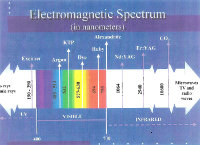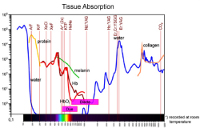Laser Dermatology
Laser is a radiance generator, using the phenomena of stimulated emission. The term is an acronym for Light Amplification by Stimulated Emission of Radiation. Laser radiation has characteristic properties, difficult or even impossible to achieve in other types of radiation sources:
- it is coherent in time and space,
- it is usually polarised,
- it has the form of a beam with very little variance;
The basic laser components are the following:
- active laser medium - laser action (lasing), meaning that quantum photon amplification takes place here,
- optical resonator - allows identifying appropriate photons.
- pumping mechanism - provides energy to the active medium;
The history of lasers goes back to the 50ties and 60ties of the 20th century. The first constructed and applied laser was a ruby laser.
Types of lasers:
1) depending on power (high and low-power),
2) depending on operating mode (continuous, pulse wavelength),
3) depending on radiation spectrum in which the laser operates:
- infrared lasers,
- visible light lasers,
- ultraviolet lasers;
4) depending on active laser medium:
 Active laser medium decides about the most important laser parameters, determines the length of emitted wave, its power, pumping mode and possible laser applications.
Active laser medium decides about the most important laser parameters, determines the length of emitted wave, its power, pumping mode and possible laser applications.
Gas lasers:
- He-Ne helium-neon laser (543 nm lub 633 nm),
- Ar argon laser (458 nm, 488 nm lub 514,5 nm),
- carbon dioxide laser (10,6 μm);
Solid-state lasers:
- ruby laser (694 nm),
- neodymium glass laser,
- neodymium YAG laser (Nd:YAG – 1064 nm),
- erbium laser on glass (Er:glass – 1550nm),
- erobium YAG laser (Er:YAG - 1645 nm),
- thulium YAG laser (Tm:YAG) (2015 nm),
- holmium Yag laser (Ho:YAG) (2090 nm);
Liquid lasers:
- dye lasers - the active medium are dyes dissolved in an inactive, transparent medium, such as rhodamine,
- chelated lasers,
- neodymium lasers,
- Semiconductor lasers:
- junction semiconductor lasers (laser diodes - 800-980 nm)
- junctionless semiconductor lasers;
Free electron lasers:
- X-ray laser;
 In aesthetic dermatology, the following lasers are applied:
In aesthetic dermatology, the following lasers are applied:
- ruby (694 nm)
- alexandrite (755 nm)
- diode (810 nm)
- Nd:YAG (1064 nm)
- Er:glass (1550 nm)
- Er:YAG (2940 nm)
- CO2 (10 600 nm)
IPL (Intense Pulse Light) - introduced to aesthetic medicine practice in 1996, is a complex device, commonly included into the family of lasers, although it is not a laser in the traditional sense. Similarly to a real laser, it emits light beam, which, however, is nor coherent and homogeneous, but scattered and of varied wavelengths. Due to the newest technology, light beams may penetrate different depths of our skin and operate multidirectionally, stimulating production of collagen on one hand, and, on the other - eliminating any kind of spots, hair, wrinkles and redness.
During the session, a special lamp emits radiation in a full scope of visible light and partly of infrared light. The length of light beam depends on the kind of the treated lesions and the type of skin. It is regulated with special prisms, inserted at the tip of the device, which cause cutting particular wave beams at the desired length. The effectiveness of the treatment depends largely on appropriately regulated wave lengths and also on the number and duration of impulses.

